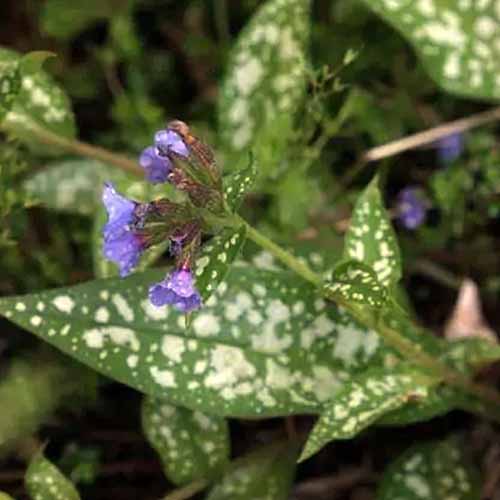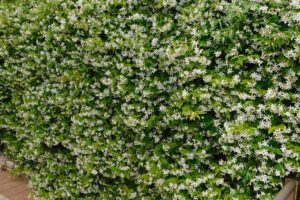Pulmonaria spp.
Lungwort is a flowering perennial suited to cultivation in USDA Hardiness Zones 3 to 8.

We link to vendors to help you find relevant products. If you buy from one of our links, we may earn a commission.
And despite having a name that is anything but picturesque, the silvery-white speckled leaves and pink and blue blossom clusters are a charming addition to shady areas of the landscape.
Join us as we talk about how to grow and care for lungwort, and explore multiple species and cultivated varieties that may meet your landscaping needs.
Here’s a preview of the topics we’ll address:
What You’ll Learn
Let’s start with a little background.
Cultivation and History
Lungwort is native to Europe and Asia.
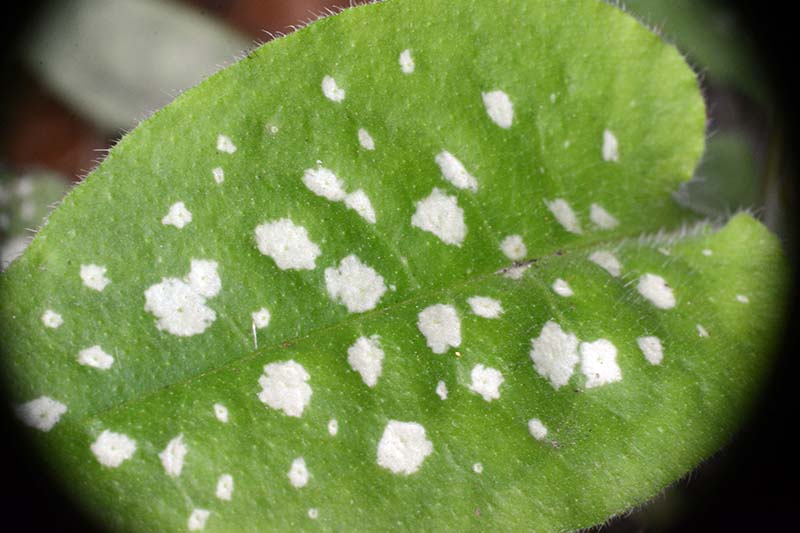
The earliest recorded knowledge of the species dates to the 1600s when the “Doctrine of Signatures” assigned medicinal value to plants resembling human body parts. In this case, the speckled foliage looks like diseased lungs.
The leaves and roots were administered to patients with respiratory ailments, hence the Latin nomenclature Pulmonaria and the common name lungwort.

Pulmonaria came to America from Europe over 200 years ago. Also known as Bethlehem sage, Jerusalem cowslip, and soldiers and sailors, there are approximately 15 species in the genus, with about a third of them cultivated by gardeners.
In addition to straight species, there are many cultivated varieties with enhanced traits, such as mildew resistance and color variation.
Lungwort has an upright, clumping growth habit with a basal mound of hairy or hairless elliptical to lance-shaped leaves. They may be green, flecked with silvery-white, or mostly silvery-white.
The silvery markings are air pockets in the leaves that alter the chlorophyll’s appearance.
Slender, leafy racemes rise from the foliage in early spring to bear clusters of petite funnel-shaped blossoms.
At any given time, there may be two shades of flower colors present because the buds are pink, and the flowers mature to blue, pink, purple, red, or white, depending upon the species or cultivar.
Plants may be semi-evergreen in the warmest zones. In the spring, new growth replaces the old.
Overall dimensions are six to 18 inches tall and 12 to 30 inches wide, depending upon the species and cultivar. Species plants naturalize readily via rhizomes. True species also self-sow, but many of today’s hybrids are sterile.
Let’s find out how to get started in the home garden.
Propagation
To begin to grow lungwort, you’ll need seeds, divisions from an existing plant, or potted nursery plants. Let’s look at each method.
From Seeds
As mentioned, many of today’s hybrid cultivars are sterile and produce no seeds. If you find seeds from a true species, you can direct sow them outdoors in early spring after the danger of frost has passed.
Mature plants range from 12 to 30 inches wide, depending upon the type. Follow the spacing instructions on your seed packet and scatter a few seeds at each recommended interval, to ensure that at least one germinates.
This can be challenging, as the seeds are tiny. If you’re like me, you may find a magnifying glass helpful.
When the seedlings have true leaves, thin them to one per interval. Relocate or discard the rest.
You can also start seeds indoors a few weeks in advance to get a jump on the growing season.
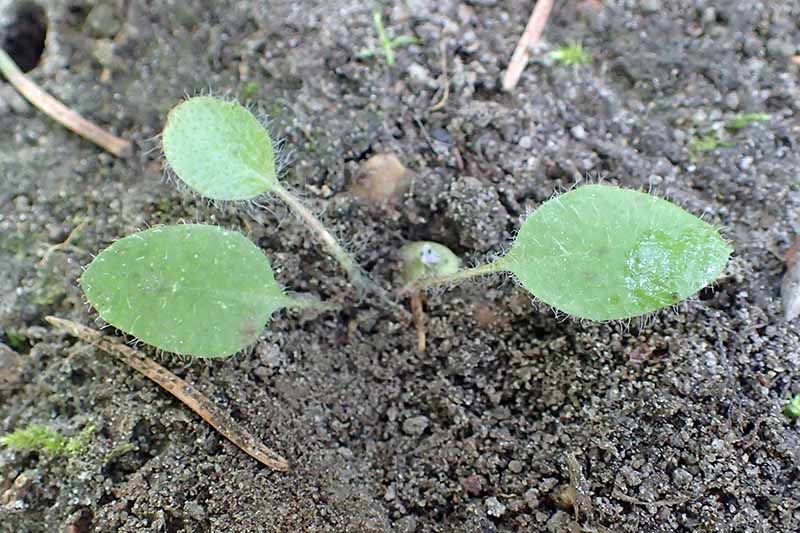
When sowing, barely cover the seeds. Keep the soil evenly moist during germination. Expect sprouts in two to three weeks.
Once the seedlings have true leaves and the frost danger passes, it’s time to harden them off and transplant them to the garden.
By Division
You can divide an existing plant in early summer after it blooms, in late summer, or in early fall, well before the first frost.
First, choose a clump of stems.
Notice how deeply they sit in the soil. You’ll need this information for transplanting.
You’ll need a clean, sharp garden knife like a hori hori as well.
Unearth a clump of stems, and lay the clump on its side.
Slice down between the stems to divide the clump into sections. Each should have one or more leafy stems with attached roots.
Transplant the divisions immediately.
From a Nursery Pot
The easiest way to begin is by purchasing starter plants from a nursery. With the work of germination complete, all that remains is transplanting to the garden location of your choice.
Now let’s move from propagation to growing in the garden, beginning with planting instructions.
How to Grow
Once seedlings, divisions, or nursery pots are ready for transplant, it’s time to find a suitable garden location.
Lungwort does best in part shade, but has a high tolerance for morning sun or full shade. If you choose these alternative placements, note that performance may be less than optimal.
Too much sun during peak summer heat may cause rapid drying of the soil and foliar wilting. Deep shade, especially during a wet spell, may promote fungal growth and rotting.
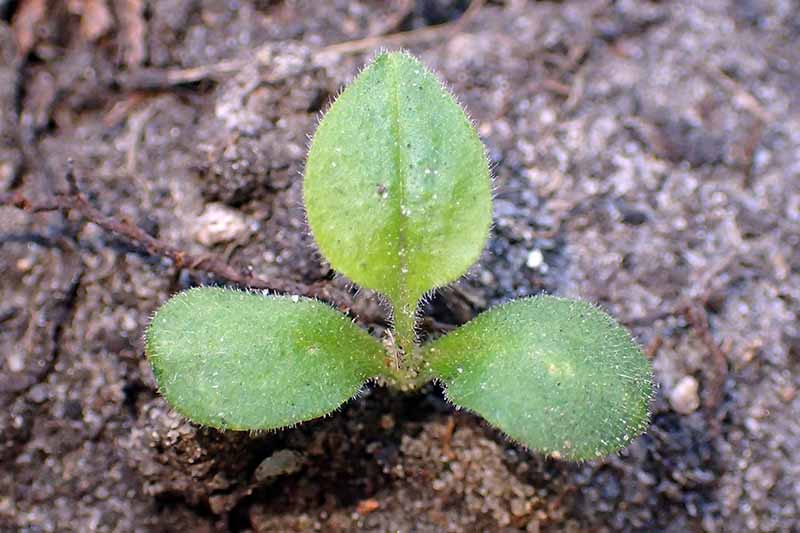
The ideal soil is evenly moist, organically-rich loam that drains well and has a neutral to slightly alkaline pH of 7.0 to 7.5.
Work the soil down about eight inches, digging, turning, and breaking up any clumps. Remove stones and debris.
Set the seedlings, divisions, or nursery plants into the prepared soil at the same depth to which they were originally growing.
Tamp the soil around them just enough for a firm hold without compaction.
As mentioned above, space multiple plants generously to accommodate mature dimensions that vary by type and range from 12 to 30 inches.
With a moist shade-loving species, it’s crucial to avoid overcrowding as it may promote fungal disease.
Water deeply after planting.
From this point, if it doesn’t rain at least once a week, soak the soil deeply with the garden hose or soaker hose. Use a moisture meter to guide you. Lungwort will fail to thrive in dry soil.
You may fertilize at planting time and once a year after that.
The pros in Extension and Outreach at Iowa State University recommend fertilizing sparingly in early spring, as Pulmonaria are not heavy feeders.
Apply a granular slow-release product with a balanced N-P-K blend, such as 10-10-10.
Growing Tips
Prime your lungwort for success by remembering the following:
- Select a partially shaded location.
- Provide organically-rich soil that is consistently moist, well-draining, and neutral to slightly alkaline.
- Water deeply as needed in the absence of rain.
- Fertilize sparingly with a well-balanced granular product.
Pruning and Maintenance
After blooming, lungwort flowers turn brown, and the racemes begin to flop, making for an unsightly scene.
The solution is not to deadhead but to snip off entire spent stems in early summer to stimulate foliar growth. The fresh green leaves may last right through fall, depending upon how hot and dry your summer is and how much you water.

Post-bloom, it’s an excellent time to divide plants as needed every few years to prevent them from becoming overcrowded. And as mentioned, you can also divide in late summer or early fall.
Dry summer soil can induce dormancy. Yellow or chlorotic foliage may be the first sign that plants are shutting down. Again, use a moisture meter to avoid letting the soil dry out.
Another task to perform is cutting down all of the foliage at season’s end and before the first frost. Use clean, sharp pruners and cut all stems to a height of about one inch. Avoid cutting too low to prevent damage to the crowns, where the stems and roots meet.
Pruning and disposing of foliar debris aids in reducing pest and disease issues.
Layer two inches of organically-rich mulch over the growing area before the first frost, to provide insulation, moisture retention, and nourishment for next year’s growth.
Remove the old mulch in early spring before the new shoots sprout and the showers typical of mid- to late spring soak the ground.
Cultivars to Select
When shopping for lungwort species and cultivars, remember that the latest hybrid developments offer some of the best mildew resistance, a great benefit for a shade-loving species prone to powdery mildew.
Here are two lungwort cultivars and a straight species to whet your appetite:
Cevennensis
P. longifolia ‘Cevennensis’ has dark violet-blue blossoms and silver spotted foliage.
Mature dimensions are 12 to 18 inches tall and 18 to 30 inches wide.
‘Cevennensis’ is available from Nature Hills Nursery.
Hairy
The pink buds of hairy lungwort, P. mollis, shade to blue as they open. The foliage is green without variegation.
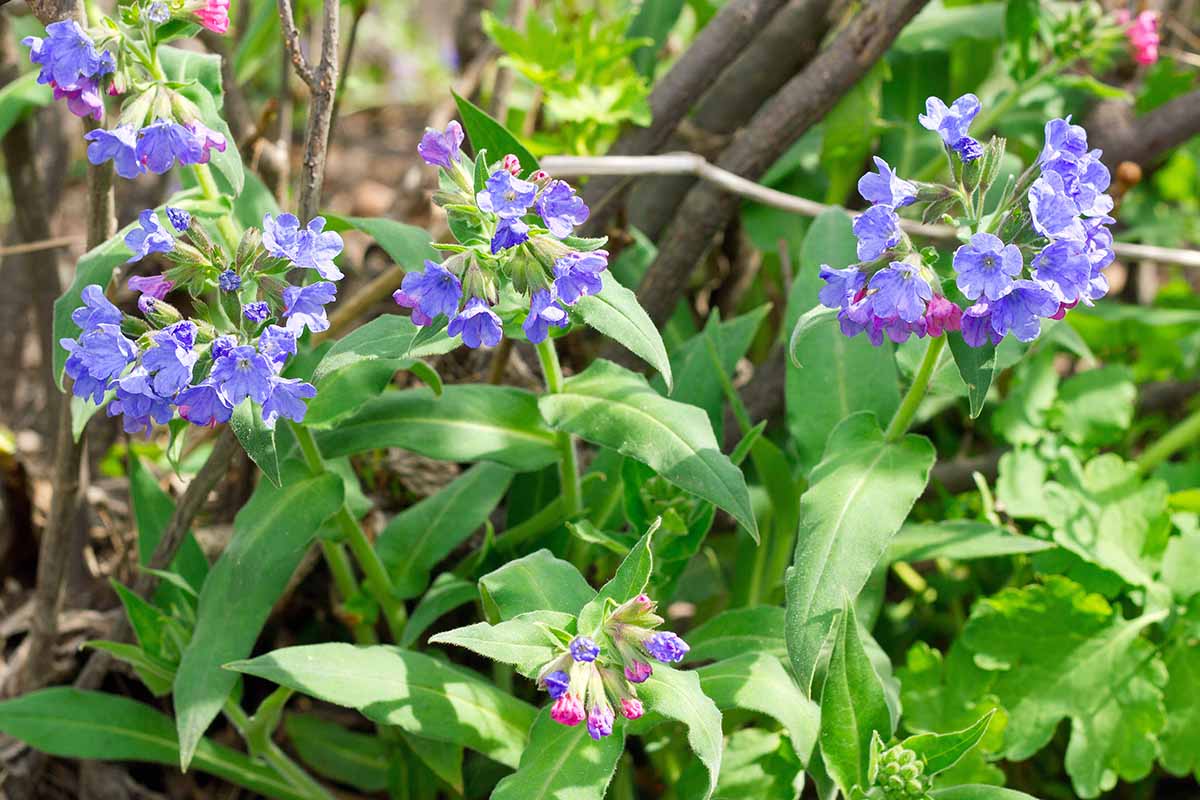
Expect mature heights of eight to 18 inches and a spread of 12 to 24 inches.
P. mollis earned a top rating of five stars in the Chicago Botanic Garden 1994 to 1999 Evaluation Project for which 51 Pulmonaria species and cultivated varieties were studied.
Raspberry Splash
Pulmonaria ‘Raspberry Splash’ displays bright raspberry-pink blooms that shade to violet.
Expect mature heights of 10 to 12 inches and a spread of 15 to 18 inches.
‘Raspberry Splash’ is available from Nature Hills Nursery.
There are many more exciting options available to the home gardener as well, so keep your eyes peeled!
Managing Pests and Disease
Lungwort species are not prone to pest or disease issues. However, plants that grow in moist shade may be susceptible to slugs and snails. Read our guide for more information on managing these pests.
Telltale signs of their presence include chewed foliage and glistening slime trails on the soil.
Avoiding oversaturation and overcrowding are the best deterrents.
Two types of lungwort diseases to be aware of are powdery mildew and root rot.
Powdery mildew is a fungal condition that may proliferate if conditions are too wet. It appears as a fuzzy grayish coating on the foliage. Remove affected leaves and treat the remaining foliage with a fungicide.
Root rot may occur if the soil is too wet. With poor drainage and/or too much water, the roots may become saturated, spongy, and unable to absorb nutrients.
You may not notice rotting until the foliage turns yellow and softens.
Yellow foliage may also signify underwatering. When in doubt, dig up a clump of foliage and examine the roots and soil for signs of severe wetness or dryness.
Oversaturated flora with extensive rotting may not recover. However, dry plants may revive with deep watering.
Best Uses
Lungwort offers gardeners the opportunity to brighten up the understory beneath trees and shrubs.
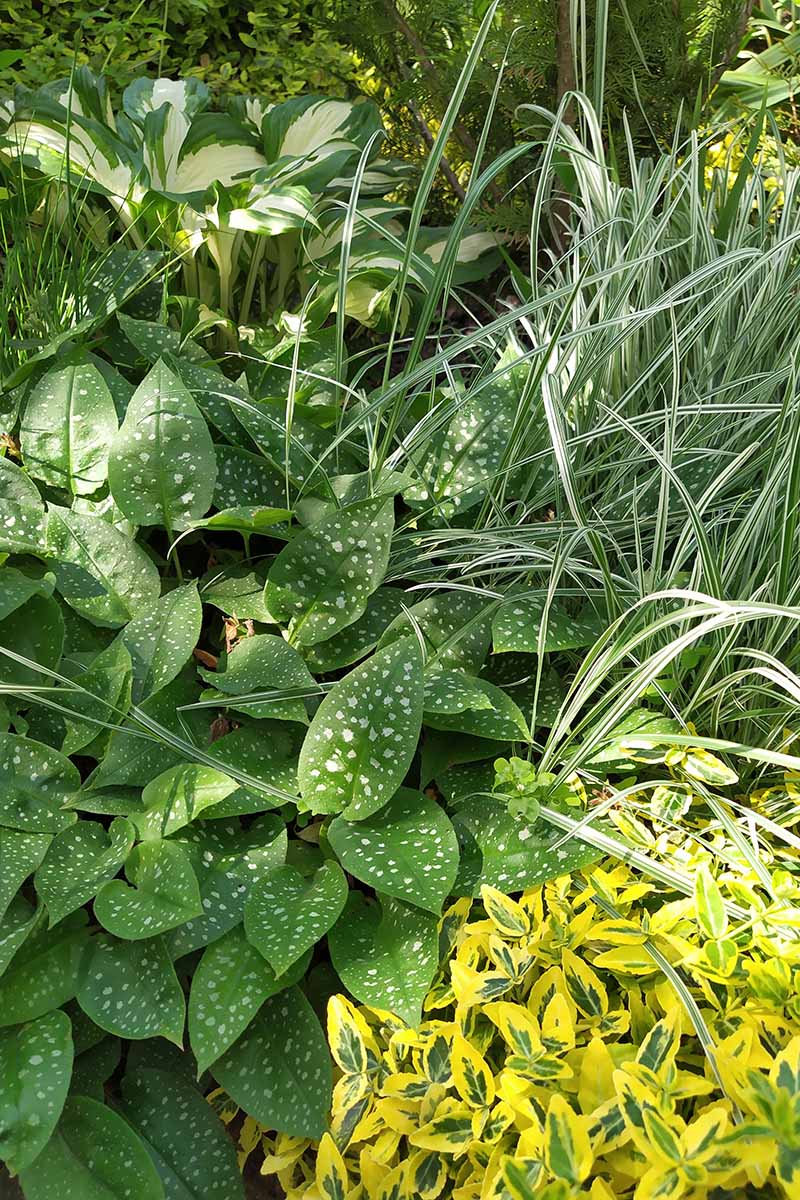
Its extensive rhizomatous root system provides a substantial ground cover that inhibits erosion.
In beds and borders, it mingles well with flora with similar cultural requirements, such as hellebore, heuchera, hosta, fern, and iris.
In a stand-alone drift beneath a tree canopy, dappled sunlight highlights the silvery-white foliage. And if you have black walnut trees, no worries. Lungwort tolerates the toxic juglone they produce.
The charming blossoms are also a pleasant surprise along a wooded garden path or peeking out from the stone configurations of a rockery.
You’ll be pleased to hear that deer and rabbits usually leave the foliage alone unless unusual conditions, like drought or overpopulation, reduce forage options.
And finally, since we’ve had Pulmonaria in the United States for over two centuries, local pollinators, like bees and hummingbirds, are well-acquainted with them as a nectar source and will be attracted to your yard.
Quick Reference Growing Guide
| Plant Type: | Flowering perennial | Flower / Foliage Color: | Blue, pink, purple, red, white/green, silvery-white variegation |
| Native to: | Asia and Europe | Tolerance: | Black walnut juglone toxicity, deer, full shade, morning sun, rabbits |
| Hardiness (USDA Zone): | 3-8 | Soil Type: | Organically-rich loam |
| Bloom Time: | Early spring | Soil pH: | 7.0-7.5 |
| Exposure: | Part shade | Soil Drainage: | Well-draining |
| Spacing: | 12-30 inches | Attracts: | Bees, beneficial pollinators, hummingbirds |
| Planting Depth: | Barely cover (seeds); same depth as original container (transplants) | Companion Planting: | Hellebore, heuchera, fern, hosta, iris |
| Height: | 6-18 inches | Uses: | Bed, border, erosion control, ground cover, mass planting, rockery, shade garden understory, woodland setting |
| Spread: | 12-30 inches | Order: | Boraginales |
| Water Needs: | Moderate | Family: | Boraginaceae |
| Maintenance | Moderate | Genus: | Pulmonaria |
| Common Pests and Diseases: | Slugs, snails; powdery mildew, root rot | Species: | Affinis, angustifolia, longifolia, officinalis, saccharata |
What’s in a Name?
Once you get past lungwort’s off-putting name, I think you’ll agree that species that flower in moist shade are assets to gardeners with these growing conditions.
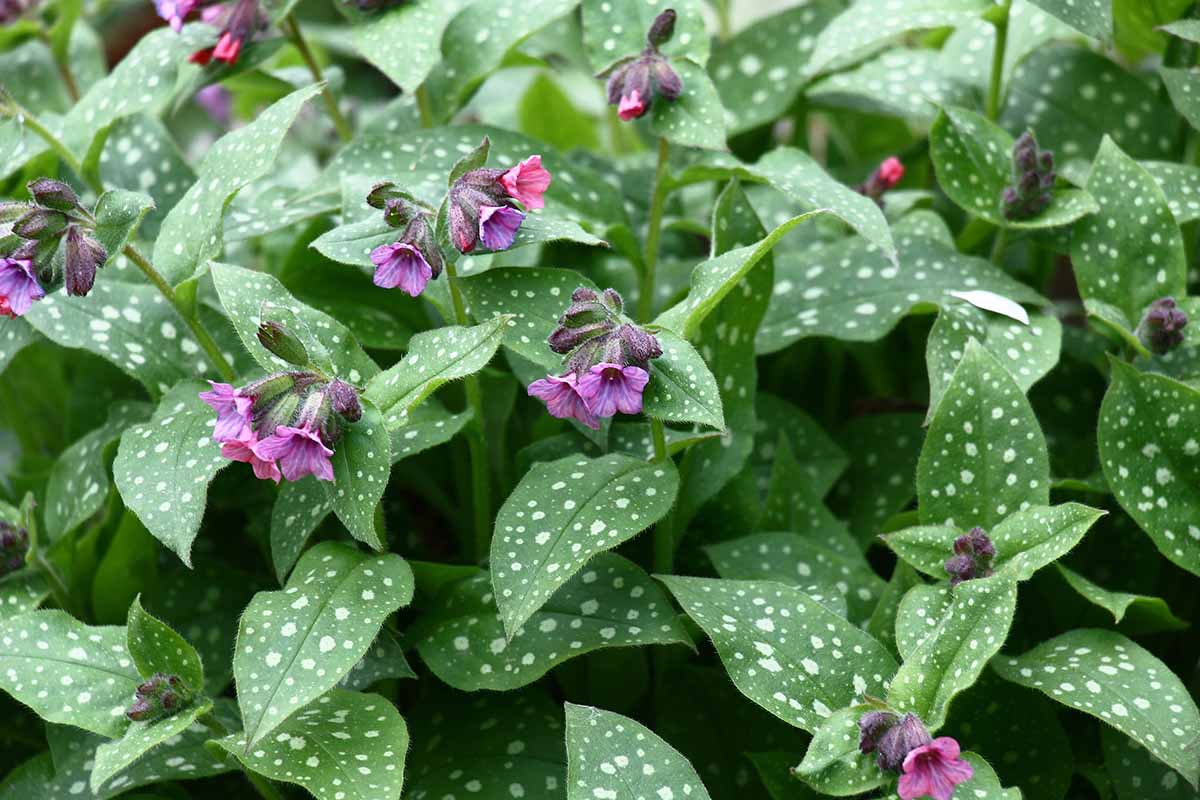
And once you remove the spent flower stems in early summer, you have a carefree patch of lush, eye-catching foliage to enjoy right through to frost.
Are you growing lungwort? Let us know in the comments section below!
If you enjoyed reading about lungwort and would like to learn about more flowering shade perennials, we recommend reading the following next:
